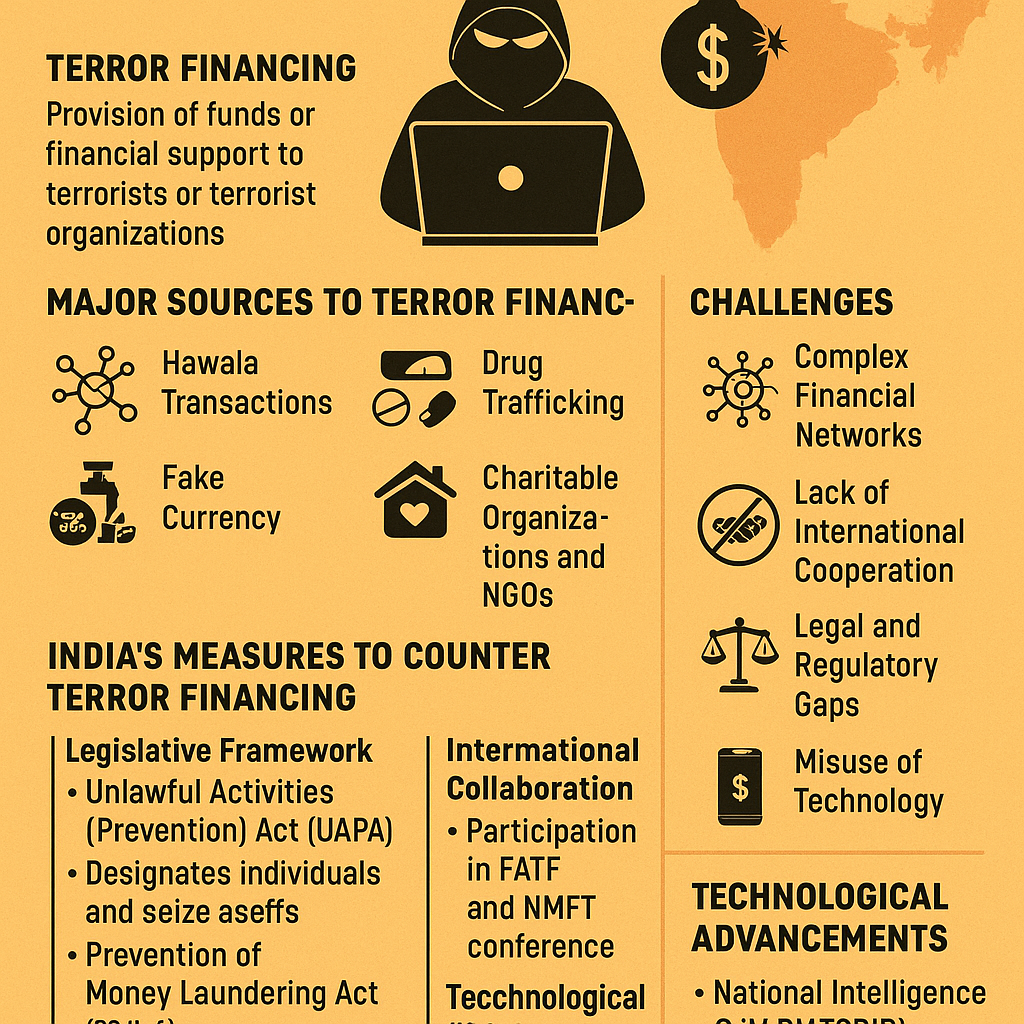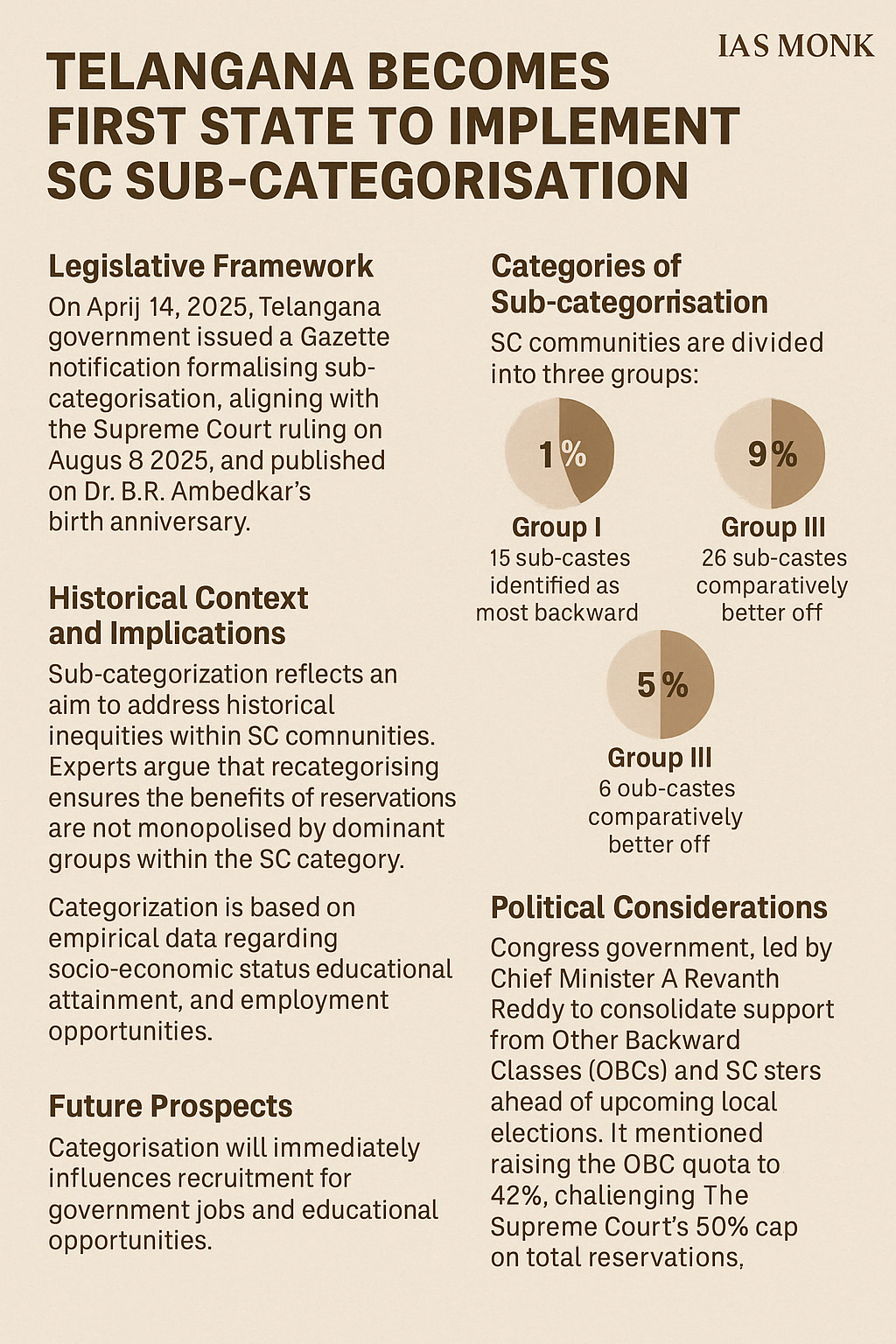
📅 May 3, 2025, Post 5: The Fading Voice of the Commons: The Decline of Private Member’s Bills in India |Mains Essay Attached | Target IAS-26 MCQs Attached: A complete Package, Dear Aspirants!
Combating Terror Financing: India’s Strategic Response after Pahalgam Attack

INTERNATIONAL HERO — PETAL 005
🗓️ May 3, 2025
🎯 Theme: International Relations & Security Strategy
🔹 Intro Whisper
After the tragic Pahalgam terror attack that shook the nation and claimed 26 innocent lives, India has turned to global financial mechanisms as tools of accountability. This time, the battlefield lies not in the hills, but in ledgers, sanctions, and global trust.
🧭 Key Highlights
- Trigger Incident: The Pahalgam terror attack resulted in the deaths of 26 people, primarily tourists, intensifying India’s security and diplomatic response.
- Strategic Response: India is now pushing for Pakistan’s re-entry into the FATF Grey List, citing concerns over terror financing and misuse of development funds.
- FATF in Focus:
- Established in 1989 by the G-7 to combat money laundering.
- Post-9/11, expanded to include terrorist financing and proliferation of WMDs.
- India became a full member in 2010.
- Economic Implications: Grey-listing restricts access to global funding, foreign investments, and credibility. Pakistan was previously grey-listed from 2018 to 2022.
- India’s Global Engagement:
- India is engaging with IMF, World Bank, and ADB to tighten aid flow controls.
- Also building consensus among FATF member nations ahead of the next plenary.
- Understanding Terror Financing:
- Includes hawala, fake currency, drug trafficking, extortion, and misuse of charities/NGOs.
- Funds both operational costs and ideological expansion of terror outfits.
📌 India’s Institutional Measures
| Legislative Tool | Description |
|---|---|
| UAPA | Empowers state to seize assets and designate entities as terrorists. |
| PMLA | Tracks and punishes money laundering activities. |
| Investigative Agencies | Role |
|---|---|
| FIU-IND | Analyzes suspicious transactions. |
| NIA | Probes terror-linked financial networks. |
🌍 India’s Global Role
- India hosts and participates in forums like “No Money for Terror” and continues leveraging forums like NATGRID for real-time intelligence.
- The current push indicates how financial sovereignty and security are increasingly interlinked.
📘 GS Paper Mapping
- GS Paper 2: International Relations – FATF, IMF, India-Pakistan relations.
- GS Paper 3: Internal Security – Terror Financing, Cyber and Economic Security.
💭 A Thought Spark — by IAS Monk
“Those who fund chaos in shadows must be exposed under the sunlight of accountability.”
In a world where bullets may miss but bank transfers never do, India’s message is firm — security today demands financial vigilance tomorrow.
High Quality Mains Essay For Practice :
Word Limit 1000-1200
Combating Terror Financing: Why the Ledger is Now a Battlefield
🔷 Introduction
The Pahalgam terror attack that killed 26 civilians has triggered not just national mourning but also a diplomatic and strategic recalibration. India’s swift pivot to financial diplomacy — by advocating for Pakistan’s re-entry into the Financial Action Task Force (FATF) grey list — reflects a growing trend: economic warfare is becoming the frontline of national security. In an age where terrorist operations are sustained by covert financial networks rather than visible troop deployments, monitoring money flows is as critical as guarding borders.
🔷 The Role of FATF: A Watchdog with Global Claws
The Financial Action Task Force (FATF), established in 1989 by the G-7, was originally intended to counter money laundering. Post 9/11, its mandate expanded to address terrorist financing and later the funding of weapons of mass destruction (WMDs). FATF’s grey and black lists function as diplomatic pressure valves. Countries placed on these lists experience economic pain: reduced foreign investment, higher borrowing costs, and reputational damage.
Pakistan’s Grey List History:
Between 2018 and 2022, Pakistan was on FATF’s grey list. During this time, it faced economic strain and was pushed to adopt a 34-point action plan. Its removal in October 2022 was conditional, not celebratory. India now argues that Pakistan has not upheld its commitments and that a re-listing is necessary to curb state-supported or state-neglected terror financing.
🔷 Why FATF Matters More Than Ever
1. Financial Strangulation as Policy Tool
In today’s globalized world, money flows define power. Terror financing doesn’t always originate from underground crime syndicates; it can be routed via NGOs, charities, and unregulated hawala systems. India’s call for review of Pakistan’s financing by the IMF, World Bank, and ADB seeks to leverage multilateral institutions as watchdogs, not just donors.
2. Bridging the Legal-Institutional Divide
India has strengthened its legal framework through legislations like:
- Unlawful Activities Prevention Act (UAPA) – allows freezing assets and listing individuals as terrorists.
- Prevention of Money Laundering Act (PMLA) – gives enforcement agencies teeth to investigate financial irregularities linked to terrorism.
At an institutional level, FIU-IND (Financial Intelligence Unit) and NIA (National Investigation Agency) are working to intercept illicit transfers and trace terror money trails. Yet, without international financial intelligence cooperation, enforcement becomes incomplete.
🔷 The Complex Nature of Terror Financing
Unlike conventional warfare, terrorism operates in a shadowy network of transactions. The key sources include:
- Hawala transactions: Informal, untraceable and often global.
- Drug trafficking & smuggling: Major revenue sources for insurgent groups.
- Fake currency: Disrupts economic stability while supplying unaccounted funds.
- Extortion and kidnapping: Particularly common in insurgency-affected areas.
- Front charities: Organizations masking terror operations behind humanitarian labels.
With emerging technologies like cryptocurrency, prepaid cards, and dark web banking, the terror-finance nexus is evolving faster than many governments’ regulatory capacity.
🔷 India’s Global Posture and Challenges
India’s call for Pakistan’s grey-listing is not just a bilateral skirmish. It’s a bid to internationalize accountability, framing terrorism as a global financial crime rather than just regional hostility.
However, challenges remain:
- Lack of multilateral consensus: Many FATF decisions are geopolitical. Countries with strategic interests may hesitate to act.
- Legal asymmetry: While India enforces UAPA and PMLA strictly, other nations may have more relaxed frameworks.
- Technological loopholes: Blockchain transactions and decentralized finance (DeFi) platforms challenge regulatory oversight.
Still, India’s proactive diplomatic outreach in FATF plenaries, NMFT conferences, and regional dialogues has positioned it as a thought leader on financial counter-terrorism.
🔷 Strategic Leverage Beyond Sanctions
India’s use of economic tools as strategic pressure echoes broader trends in 21st-century diplomacy:
- China–US Tech Sanctions: Tech export controls reflect how trade and security are merging.
- Russia–Ukraine Conflict: Western sanctions aimed to strangle Russia’s war economy.
- Israel–Iran: Financial sabotage is a key plank of counter-terror strategy.
Similarly, India’s FATF campaign signals a mature recalibration of foreign policy—shifting from emotional outrage to measurable deterrence.
🔷 Domestic Resilience: Not Just a Global Fight
While India seeks international solidarity, internal preparedness is vital. Steps include:
- Strengthening NATGRID: Real-time financial intelligence and cross-agency data sharing.
- Enhancing cyber vigilance: Tracking cryptocurrency-based laundering and global remittances.
- Public vigilance: Awareness about NGO funding and suspicious donations.
- Judicial agility: Fast-track courts to try financial terror cases without delay.
🔷 Conclusion: Finance as Frontier, Strategy as Shield
The battlefield has changed. Missiles may still fly, but Excel sheets, encrypted chats, and international SWIFT transactions now chart the course of conflict. The terror networks that seek to destabilize India thrive not just in valleys or foreign training camps — but in bank transfers, shell companies, and donation drives.
India’s post-Pahalgam campaign to grey-list Pakistan is not revenge — it is resilience, recalibrated for the financial age. And if successful, it will mark a shift from reactive retaliation to strategic disruption.
🔖 Closing Quote
“The war against terror is no longer fought with guns alone — it is fought with spreadsheets, sanctions, and surveillance.”
Target IAS-26: Daily MCQs: May 3, 2025
📌 Prelims Practice MCQs
Topic: FATF, Terror Financing & India’s Strategic Response
MCQ 1 — Type 1 (How many of the above statements are correct?)
Which of the following statements about the Financial Action Task Force (FATF) are correct?
1. FATF was created by the United Nations in 1999 to combat cybercrime.
2. Grey listing by FATF increases scrutiny and may restrict a country’s access to foreign investment.
3. Pakistan was removed from the FATF grey list in 2022.
4. One of FATF’s expanded mandates includes curbing funding for Weapons of Mass Destruction (WMD).
Options:
A) Only two
B) Only three
C) All four
D) Only one
🌀 Didn’t get it? Click here (▸) for the Correct Answer & Explanation
✅ Correct Answer: B) Only three
🧠 Explanation:
Statement 1 is incorrect: FATF was formed in 1989 by the G7, not the UN, and not for cybercrime but for anti-money laundering.
– Statement 2 is correct: Greylisting increases scrutiny and deters investment.
– Statement 3 is correct: Pakistan was removed in 2022.
– Statement 4 is correct: Since 2012, FATF includes WMD funding in its mandate.
MCQ 2 — Type 2 (Two Statements: Choose correct option)
Consider the following two statements regarding India’s response to terror financing:
1. India has requested the IMF and World Bank to conduct audits of Pakistan’s financial aid usage post the Pahalgam attack.
2. India’s Unlawful Activities (Prevention) Act empowers authorities to confiscate terrorist-linked property and list individuals as terrorists.
Options:
A) Only 1 is correct
B) Only 2 is correct
C) Both 1 and 2 are correct
D) Neither 1 nor 2 is correct
🌀 Didn’t get it? Click here (▸) for the Correct Answer & Explanation
✅ Correct Answer: C) Both 1 and 2 are correct
🧠 Explanation:
Statement 1 is correct: India has reached out to global financial institutions to scrutinize Pakistan’s financial flows. – Statement 2 is also correct: UAPA allows both seizure of assets and designation of individuals as terrorists.
MCQ 3 — Type 3 (Direct Factual MCQ)
Which of the following is not a commonly identified source of terror financing as per India’s recent counter-terror framework?
A) Hawala Transactions
B) Agriculture Subsidies
C) Drug Trafficking
D) Fake Charitable Organizations
🌀 Didn’t get it? Click here (▸) for the Correct Answer & Explanation
✅ Correct Answer: B) Agriculture Subsidies
🧠 Explanation:
Hawala, fake currency, drugs, and charity misuse are known terror finance channels. Agriculture subsidies are legitimate welfare mechanisms and not identified as a terror finance method.


















